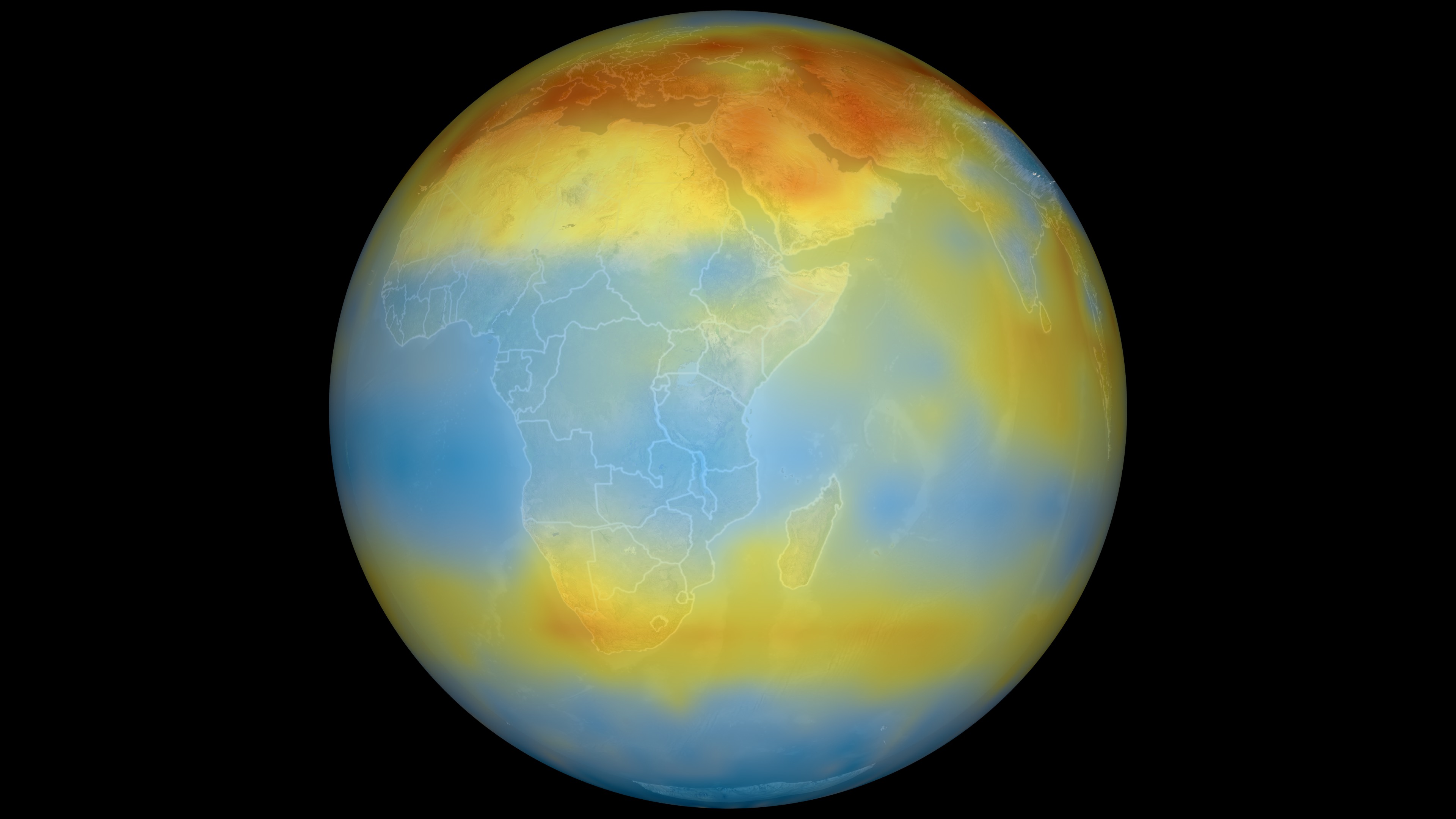Discovering A Belt Of Carbon Dioxide
When scientists got their first glimpse of satellite data showing the distribution of carbon dioxide throughout the atmosphere, they in part saw what they expected: an uneven distribution of the greenhouse gas over the globe, with higher levels in the more populated, more industrial Northern Hemisphere. But they also saw a dominant feature that was wholly unexpected. A continuous belt of higher carbon dioxide concentrations circled an area in the Southern Hemisphere that covered the tip of South America, Africa and southern Australia. Computer models that predict how chemicals move throughout the atmosphere did not predict this band. Scientists now think that strong thunderstorms and winds that flow around South America's high Andes Mountains lift carbon dioxide into what's called the "free troposphere." There it becomes trapped in the jet stream of the mid-latitudes, which propel it around the world. The sources of this belt are many: industry and power plants in coal-rich South Africa, electricity generation in eastern Australia and in Buenos Aires, Argentina, as well as plant respiration and fires. Watch the visualization below to see the first evidence of the belt, as detected by the Atmospheric Infrared Sounder (AIRS) instrument aboard NASA's Aqua satellite in 2003. AIRS now provides scientists with unprecedented global data on greenhouse gases in the atmosphere.

Researchers discovered a previously unknown band of carbon dioxide pollution encircling the Southern Hemisphere.
The highest levels of CO2 concentrations are in more populated and industrial areas of the world.
Wind vectors and monthly average CO2 concentrations in 2003. High CO2 concentrations of ~385 ppm are in red, low CO2, about ~360 ppm, is blue.

The concentrated carbon dioxide exists in the mid-troposphere about 5 miles above Earth's surface.

Visible are a vortex off the Eastern U.S. and the northern flow of wind created by the Southern Andes, the world's highest mountain range.

The belt of concentrated carbon dioxide is mostly contained between 30 and 40 degrees south latitude.

Scientists cite coal-fired power plants like this one in Southern Australia as one of the sources of the carbon dioxide.
Credits
Please give credit for this item to:
NASA's Goddard Space Flight Center
Photograph of a coal-fired power plant in southern Australia courtesy of Gary Sauer-Thompson
-
Animators
- Lori Perkins (NASA/GSFC)
- Greg Shirah (NASA/GSFC)
-
Producer
- Aries Keck (ADNET Systems, Inc.)
-
Scientists
- Moustafa Chahine (NASA/JPL CalTech)
- Tom Pagano (NASA/JPL CalTech)
- Edward Olsen (NASA/JPL CalTech)
-
Writer
- Aries Keck (ADNET Systems, Inc.)
Release date
This page was originally published on Thursday, December 8, 2011.
This page was last updated on Wednesday, May 3, 2023 at 1:53 PM EDT.
